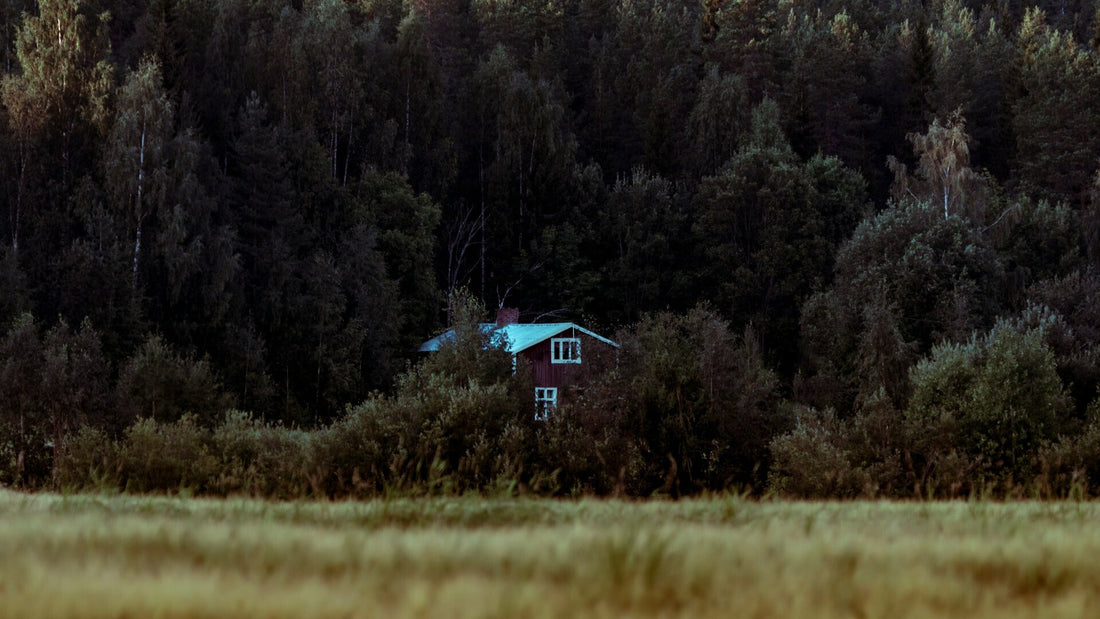Hej everyone,
when you think of Scandinavian glass design, you might think of clean lines, functional aesthetics and high-quality materials.
But have you ever taken a closer look at Scandinavian glass design? It's a fascinating world full of history, creativity, and craftsmanship that goes far beyond mere function. Let me take you on a little journey through the history of Scandinavian glass design.
The beginnings of glass design in Scandinavia
Glassblowing has existed in Scandinavia for many centuries. But it wasn't until the 18th and 19th centuries that the region began to establish itself on the international stage. Sweden and Denmark led this movement with glass factories that became known for their precise craftsmanship.
Sweden in particular played a central role when the Kosta glass factory was founded in Småland in 1742 by Anders Koskull and Georg Bogislaus Staël von Holstein, governors of the Kronoberg and Kalmar counties – the forerunner of today's Kosta Boda.
Initially, glass was primarily produced for practical purposes: drinking glasses, bottles, and other everyday objects such as window glass. But over time, glassblowers realized they could get more out of the material.
Glass became a canvas for art and innovation.
The big names: Orrefors, Kosta Boda and more
It's impossible to talk about Scandinavian glass design without mentioning Orrefors and Kosta Boda. These two names are synonymous with what makes Scandinavian glass design so sought after worldwide.
Orrefors , founded in 1898, rose to fame in the 1920s when artists like Simon Gate and Edward Hald began interpreting glass as an art form. Their work, including engravings and revolutionary techniques like overlay, set new standards. You may have seen the iconic pieces with clean, geometric shapes that remain a hallmark of Orrefors to this day.
Kosta Boda, on the other hand, is known for its creative, often colorful approach. Artists such as Göran Wärff and Bertil Vallien have left their distinctive mark on the company. Vallien, for example, used his unique sand-casting techniques to create sculptural works of art that are sought after worldwide.
What makes Scandinavian glass design so special?
One reason is certainly the combination of functionality and beauty. Scandinavian designers have a talent for highlighting the natural properties of glass. Transparency, light reflections, and simple elegance are the focus.
Another reason is the proximity to nature. Many designs are inspired by the Nordic landscape—from shimmering lakes and clear winter days to the intense colors of Nordic flora and fauna. This connection to nature gives the pieces a timeless quality.
Techniques and styles
What makes Scandinavian glass design so diverse is the range of techniques developed over the years. In addition to the aforementioned overlay glass, there are engravings, sand casting, and elaborate color techniques. Designers also experimented with new shapes and textures, resulting in unique creations that blend art and craft.
A good example of this is the work of Erik Höglund, who combined rustic glass pieces with iron to create a raw, industrial charm. Or consider the experimental works of Nanny Still, who impressed with intense colors and modern forms.
Glass design in Denmark, Finland and Norway
Although Sweden plays a leading role, the contributions of the other Nordic countries should not be forgotten.
Holmegaard is a well-known name in Denmark . The country's oldest glass manufacturer has made a name for itself with its elegant, modern designs.
Finland, on the other hand, produced icons like Iittala, where designers like Tapio Wirkkala and Timo Sarpaneva created timeless pieces that are still produced today. Their work is often inspired by Finnish nature, with flowing lines and organic forms.
Norway , often overshadowed by its neighbors, has also produced remarkable works. Hadeland Glassverk, one of Norway's oldest glass factories, combines traditional craftsmanship with modern designs, proving that Norwegian glass design has its own distinctive charm.
Why am I so fascinated by Scandinavian glass?
Each piece tells a story – of craftsmanship, inspiration from nature and the connection between tradition and innovation.
For me, they are not just objects; they are an expression of a culture that values beauty and functionality.
And the best part? There's something for everyone. Whether you prefer minimalist elegance or are looking for bold, colorful accents, the diversity of Scandinavian glass design is impressive.
Conclusion
Scandinavian glass design is an art form that perfectly blends tradition and innovation. From the pioneers at Orrefors and Kosta Boda to the modern icons at Iittala and Holmegaard, the Nordic region has a rich heritage worth exploring.
Perhaps this overview will inspire you to search for a special piece of glass that will add a personal touch to your collection or home.
Have fun discovering and collecting!

